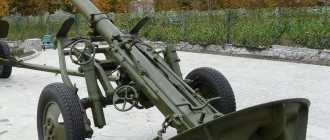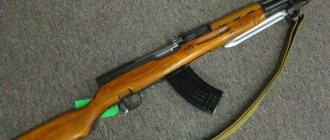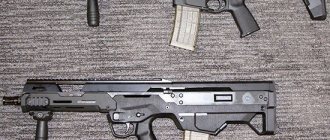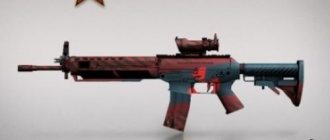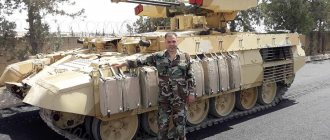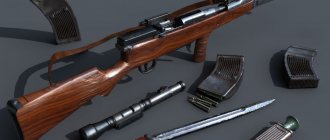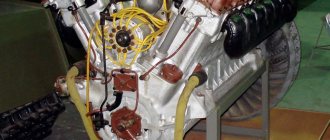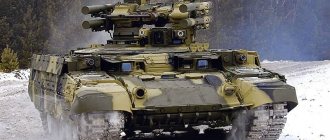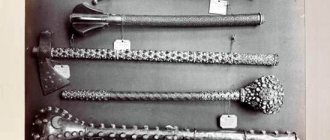When Call of Duty: Warzone introduced the Battle Royale game mode, the problem of powerful weapons became especially acute. The game can be played by up to 150 people on a large map. This new regime revealed the demand for certain types of weapons. Great power and high performance in the shots fired are required. The rest are of minor importance and do not affect the game to a large extent.
Certain weapons thrived in this new game mode. They have become especially popular among players. While others faded into the background. In this case, it does not matter whether a non-standard loading has been carried out or whether the loot is falling out.
The following weapons gained the most popularity during the game.
RPG-7
When shooting from it, standard bullets are not used at all. This type of weapon does not belong to the main and basic ones, but has many areas of use for defeating opponents. This should not be neglected.
The destruction of the enemy occurs in a limited space within the established territory and opponents can be shot from a certain distance. In this case, an important condition is sufficient visibility of the enemy's location.
The main purpose of the RPG-7 is to destroy enemy vehicles with shots. Individual highly skilled players can not only hit enemy jeeps, but also shoot down helicopters in the air during flights. In Warzone, the use of missile weapons and RPG-7 is quite common. You need to be sure that those on your team have a Russian trigger.
Legends and myths about the M16 rifle[edit]
The author of these lines has more than once encountered legends and tales associated with the M16 rifle - from the point of view of “legendary” it can well be compared with the Kalashnikov assault rifle, except that the sign of these legends is usually the opposite, negative. Here I will try to analyze several of the most popular legends.
Myth number “0” is the main and main one[edit]
M16 - analogue of AK, only more expensive, but better
. The only truth here is that the “American” is really more expensive (about one and a half to two times). As for “better,” everything is complicated. At the time of adoption and modification, the M16 was undoubtedly a step forward compared to the AKM, since it had a significantly greater accuracy of combat with all the advantages of a reduced caliber (light weight of ammunition, more comfortable shooting, high bullet speed and greater armor penetration), not to mention ergonomics. If we talk about the realities of the turn of the 70s and 80s (when the USSR had already switched to the 5.45 mm caliber and intensively used it in Afghanistan), then the AK74 was generally superior to the M16A2. Both machine guns were intended for firing in short bursts at a distance of up to 400 m, and the AK74 showed greater accuracy in automatic mode, was more reliable and cheaper than the Emka, although it was inferior to it in the accuracy of a single fire and ergonomics. However, subsequently the American concept of using the machine gun changed, and the main mode of fire became single, and at shorter distances - 300-350 m (hitting distant targets became the prerogative of Marxmen with M14 or machine gunners). The decreased distances caused a shift in military interest from the M16 to the M4, which is lighter and more compact, and has quite sufficient accuracy for distances of 300-350 m. Thus, modern versions of the AK and M-series are not analogues of each other, but, on the contrary, represent different concepts. The direct competitors of AK today can be considered the FN (Belgium) and SiG (Switzerland) families, as well as the folding G-series (Germany). It is also worth noting that there are still adherents of the 7.62 caliber who consider the good old AKM and its modern incarnations (AK103 and AK15) to be the pinnacle of weapons thought. From their point of view, the advantages of a large caliber (greater stopping power, reliability, less tendency to ricochet [2]) outweigh the advantages of 5.45 mm.
Unreliability of the M16 rifle[edit]
The roots of this legend obviously lie in the events of the late 1960s, when, due to the bungling of army officials and the desire of the Colt company to make easy money, the troops began to receive rifles and cartridges that did not correspond to those initially accepted and tested. After soldiers were taught how to clean rifles, the barrels and bolt groups of M16 rifles were coated with chrome, and gunpowder of the required brands began to be placed in cartridges, problems with rifles, if not gone away, then decreased to acceptable levels. In addition, the very first version of the M16 had a fatal bug: if the bolt carrier jammed in the rear position, it was impossible to quickly restore functionality - the cocking handle only allows you to pull the bolt group back, but not push it forward; What’s much worse is that a jammed bolt group makes regular disassembly impossible—and the unarmed soldier may not be able to bring his machine gun to the repair shop. Corrected in the next iteration (XM16E1): a bolt rammer (forward assist) was introduced into the design.
M16 does not need to be cleaned/needs to be cleaned constantly[edit]
This is, of course, not true. Firstly, any weapon should be cleaned at all times. Secondly, in real operating conditions, rifles like AR-15/M16 are capable of firing at least 1500-2000 shots without cleaning at all (this, let me remind you, is 50-60 magazines), maintaining functionality at the end of the shooting. However, both misconceptions can still be found in Russian-language sources, and each of them has historical background. The very first batch of M16s were delivered to the Army without cleaning kits and with the claim that the rifles did not require field care. The harsh reality of Vietnam turned out to be somewhat different from the test site conditions, and the cartridge manufacturer openly sabotaged the transition to gunpowder that had virtually no soot. The result, as we know, is disastrous. After this, the pendulum swung in the other direction: the comic book instructions instructed to clean and lubricate the weapon once a day or more often (regardless of whether there was shooting). Of course, this was pure reinsurance (primarily bureaucratic: everyone understood that not a single soldier, even the most pedantic, would be able to comply with such a maintenance regime, especially for a long time, so it would be difficult to make a claim against the manufacturer).
The complexity of the M16 rifle in maintenance and care[edit]
I was not able to trace the roots of this legend, but in fact, with incomplete disassembly in the field, the M16 is no more complicated than a Kalashnikov assault rifle, and in some ways it is also more convenient, because with incomplete disassembly (for inspection and cleaning “in the field”) it is disassembled into fewer components. Judge for yourself - I present the procedure for partially disassembling the M16A2 rifle (assuming that the weapon is already unloaded and the magazine is removed):
- Press out the rear pin of the receiver from left to right (with your finger, with a cartridge bullet), then pull it out to the right until it stops, while the pin will remain at the bottom of the receiver.
- “Break” the receiver around the front pin.
- By pulling the bolt cocking handle, remove the handle with the bolt group from the receiver.
- All!
The weapon can then be inspected and cleaned, with the bore being conveniently observed and cleaned from the breech side. Assembly is carried out in reverse order. Further disassembly (of the bolt group, recoil buffer with return spring) is carried out only if it is very dirty, and the gas tube is occasionally washed with kerosene or a special cleaning and lubricating compound. The gas tube DOES NOT NEED regular cleaning.
The enemy can clearly see the arrow[edit]
Or, to put it more cleverly, “The linear layout of the rifle results in a significant increase in the shooter’s profile visible (and fired upon) by the enemy.” This is one of my favorite points in comparison with the Kalashnikov assault rifle. However, if you pick up a ruler, it turns out that when shooting from behind cover with the fore-end resting on the parapet, the height of the M16 aiming line differs from the height of the AK-74 aiming line by less than 2 centimeters, and when shooting from a prone position with the magazine resting into the ground (when using 30-round magazines) - even less. When shooting standing or kneeling, the difference basically disappears, since the main target is not the shooter’s head and shoulders (located above the line of the barrel), but his torso.
The M16 rifle is not suitable for hand-to-hand combat[edit]
To understand that this is not so, it is enough to pay attention to the presence on all versions of the M16 army rifles of a tide for attaching a bayonet under the barrel. Of course, the design of the rifle does not provide for knocking out doors with the butt or using the weapon as a crowbar - there is a special tool for this, however, in extreme cases (and in our time hand-to-hand combat is more of an extreme case and not the norm) it can well be used in such a role. In addition, you need to remember that in the US Armed Forces, even ordinary infantrymen are often issued, in addition to a rifle, a service pistol - just for situations like “fighting at arm’s length.” This, by the way, is reasonable: teaching a soldier to shoot a pistol at point-blank range is much faster and easier than teaching a soldier hand-to-hand techniques, and even bayonet combat. With an opponent who has a gun, yeah. On the other hand, we pay with an increase in the load on the fighter, but the army is not for weaklings, right? And he doesn’t need to run on foot when there is a truck/armored personnel carrier, right?
The M16 rifle is made of light alloys and is much lighter than the cast iron Kalash[edit]
The first part of the statement is conditionally true. The second one is not. Indeed, the use of locking by the barrel shank made it possible to make the rifle receiver light-loaded, and traditionally it is made of aluminum alloy (there are commercial solutions from other materials - from transparent plastic to stainless steel, but we are talking about military weapons). Of course, the barrel, bolt, trigger parts and many other parts that bear the load are made of steel. The early version of the M16 (without a bolt rammer) was quite light - 2.9 kg without magazine. Modern versions (starting with A2) weigh 3.4 kg - which is more than the weight of the AK74 (3.3 kg with an empty magazine) and comparable to the weight of the AK74M (3.6 kg with an empty magazine). In fact, the source of the myth is the different balance between the AK and Emka, which is why the AK feels heavier in the hands.
MP5
This is a powerful submachine gun. He was a serious threat in all Call of Duty missions, including in Warzone. The MP5 weapon has the best combat performance compared to other SMGs.
Each bullet fired from this weapon has high lethality rates when calculating one shot. The firing range is also higher than that of similar weapons. Additionally, the MP5 can be upgraded to destroy the enemy from within range of an assault rifle. Depending on your playing style, you can make a model of a pistol.
Where it occurs[edit]
| Yes, it happened a million times! The author of this article is sure that he has seen examples of this trope many times, but cannot remember enough of them. Maybe at least a couple more come to mind? |
Literature[edit]
- “Automatic Ballad” by Andrey Ulanov. Emma is an animated M16A1 rifle. The author, a great weapons connoisseur, describes it as an elegant and beautiful weapon, with which another animated machine gun, Sashka (AKS-74), falls in love. “Dies” during a skirmish with savages - her owner Anna blocked a melee strike from one of them with a rifle, and it was destroyed. Sashka did not forgive this and at the end of the story he avenged Emma by shooting Anna.
Cinema[edit]
- In almost all action films made in the USA.
- Russian film “To Survive” - one of the main characters is armed with it. Pedal to the metal - the rifle also has an experimental XM148 grenade launcher. Pedal to the asphalt - unlike a great many Soviet and Russian films, where the M-16 was obtained by making up the StG.44, the film uses a real Vietnamese trophy.
- “13 Hours: The Secret Soldiers of Benghazi” - among all other variety, the mercenaries use Salient Arms GRY, which had not yet been released at the time of the film
- “Universal Soldier 4” - Kalashnikovs act as M16s.
- John Wick is a TR-1 by shooter and gunsmith Taran Butler.
TV series[edit]
- Terminator: The Sarah Connor Chronicles is one of the favorite examples of the Connor family. In the fifth episode of the second season, as gun porn, John demonstrates a completely real algorithm for eliminating delays using the mnemonic formula SPORTS (successfully localized by translators as STAFF): Slap - Knock (magazine), Pull - Pull (shutter), Observe - Look (inspect, no there is nothing in the chamber), Release - Release (cocking handle), Tap - Slam (on the bolt rammer), Shoot - and shoot!
Anime[edit]
- Upotte!! - personification of M-16, one of the main characters. The story of the initial failures is framed as a long path of overcoming in Vietnam from a loser to a real killing machine. At the same time, she averts the trope about PTSD from Vietnam - she was tempered there, so she remains optimistic in general in any situation.
- Black Lagoon - The NSA's Gray Foxes squad, when escaping the city in the OVA, uses an M4 with EOtech holographic sights. Which is strange, because the action takes place in 1995, when EOTech introduced the first model only in January 1996.
- City Hunter - sometimes found at various criminal sites and sometimes the main characters are armed
- Golgo 13 is the protagonist's favorite weapon, a heavily upgraded M16A2.
Video games[edit]
- 7.62 - presented in the following variants: Ar-15A2, M16A1, M16A4. M4A1, Colt Model 607;
- Battlefield series - M16 (and versions A2;A3;A4), M4 (and version A1), Mk11 Mod 0 (SR-25), CAR-15 (designated RO 933 .300 BLK).
- Rainbow Six: Siege - R4-C (Modification M4 from Remington), C8-SFW (Canadian modification M4) and C7E (Canadian modification M16A1), M4, AR15.50.
- PAYDAY series - CAR-4 (M4A1, but with special modifications, turns into both LR-300 and AAC Honey Badger PDW; more details here), AMCAR (CAR-15), AMR-16 (M16A4), Para (Olympic Arms K23B).
- Rust - LR-300.
- Counter-Strike - M4A1 in CS 1.6, M4A4 (Mk18 Mod 0 / M4A1 CQBR) and M4A1-S (CAR-15) in CS: GO.
- Escape from Tarkov - M4A1.
- Half-Life - In the High Definition Pack version, M4A1 texture with M203 grenade launcher. Since it is a reskin of the MP5, it fires cartridges from Glock (or Beretta 92 in the same HD pack).
- Insurgency - M4A1, M16A4 and Mk18 Mod 0. In the sequel, Mk 18 Mod 0 was replaced with Mod 1 and the M16A2 was added.
- Grand Theft Auto series - From GTA III (M16) to GTA V (a mixture of M4 and HK416), each part has a representative of this system.
- Spec Ops: The Line - M4A1.
- STALKER - TRs-301 (LR-300).
- PUBG - M16A4.
- Call of Duty Black Ops: In the first part: M16 and Colt Commando (CAR-15);
- In the second part: M16A1;
- In Ghosts: AAC Honey Badger and Remington R5;
- And in the third, a certain Colt CM901 appeared. In the 2019 pre-launch, the Colt Model 933, incorrectly called the M4A1. Thanks to customization, you can turn it into an M16A3, Mk18 Mod 0, and something like a Colt 9mm SMG. For purchasing Modern Warfare 2 Remastered you can get the M4A1 blueprint from MW2.
- The M4 appeared in Metal Gear Solid 2: Sons of Liberties and Metal Gear Solid 4: Guns of the Patriots;
- Fallout: Tactics - M-16A1.
RAM-7
Those who enjoy the TAR-21 from Modern Warfare 2 and MTAR players from Black Ops 2 had a lot of fun after checking out the RAM-7 in the game's first season. The weapon appears to be the same as the TAR-21 in past games and is controlled in the same manner.
This weapon option can be more classified as an SMG, firing faster shots. At the same time, each bullet can cause less damage to the enemy. Although at the time of the game such factors turn out to be in favor of the player. This is very convenient when shooting at short and medium distances. There are many attachment options for this weapon. This significantly expands the scope of its use in the game - starting with the modification of the SMG assault rifle and using a medium-range rifle.
Anti-tank guns M3 and M5
The Americans began developing anti-tank guns relatively late, but were able to build fairly successful systems. In 1932-1935, the United States tested various European-made small-caliber anti-tank guns - from the French 25-mm Hotchkiss to the Czech 47-mm.
AMERICAN VERSION OF THE GERMAN SYSTEM
Only in 1937, the 37-mm Pak 35/36 purchased from Germany was chosen as the basis for the development of an anti-tank gun. Within a year, experimental guns 17, T8 and T10 were developed. The latter, closest to the German prototype in terms of the swinging part, but on an M4 carriage of its own system, was put into service in October 1938 under the designation “37-mm M3 anti-tank gun.”
The gun had a semi-automatic vertical wedge breech, a carriage with sliding box frames, a fence, automobile-type wheels, a large track width, and a flat armor shield. Recoil devices included a hydraulic recoil brake and a spring knurl. Stop brakes were installed on the wheel axles. The optical sight was mounted on a bracket above the shield. The permissible towing speed reached 56 km/h. The weakness of the 37-mm gun against the new German tanks soon became obvious - this was confirmed by the first experience of its use in North Africa in 1942.
Read: Lockheed F-94 Starfire aircraft
An improved armor-piercing projectile with twice the armor penetration slightly improved the situation. However, the gun fought quite successfully against Japanese armored vehicles; in addition, it was easier to deliver it to the shore during landing operations and to advance it with infantry over rough terrain to combat fortified firing points. Fragmentation and grapeshot shots were very useful here. According to its capabilities, the gun was widely used on the Pacific Islands. Characteristic are the modernization carried out in 1943-1944 at the request of the Marine Corps with an increase in armor shield, and a modification of the 1944 M4A1 carriage with switchable guidance mechanisms and the ability to aim the barrel using a shoulder rest.
Since the carriage of the American model turned out to be even lighter than that of the German prototype, the stability of the gun when firing seemed insufficient. In 1942, the gun was equipped with a “Solothurn type” muzzle brake, which, however, found limited use. Nevertheless, all guns of the M3A1 modification had threads on the muzzle of the barrel. The production of 37-mm guns was stopped in the summer of 1943; a total of about 18,700 were produced, with the largest part in 1942.
Read: Smith & Wesson 59 pistol design
After the war, many 37 mm M3A1 were transferred to the “allied” regimes and continued their service for many years.
THREE-INCH ANTI-TANK
Back in September 1940, the US Army Ordnance and Technical Service decided to develop a new 76 mm (3 inch) divisional gun that could fight all modern tanks. To speed up development, the gun was made using the barrel of a 76-mm T9 (M3) anti-aircraft gun with a modified breech, and a modified bolt, recoil devices and carriage of a 105-mm M2A1 field howitzer were also used. The result was a somewhat cumbersome weapon, which, however, could be quickly put into production. The gun was adopted for service in December 1941 under the designation M5, production began in 1942, and in 1943 the first guns found combat use in North Africa. Work on anti-tank ammunition for them dragged on until the beginning of 1944. During this time, they managed to equip the M5 with an inclined shield, which can be switched off by suspension of the combat stroke, and improve the guidance mechanisms (M1A1 carriage), that is, make the gun specifically anti-tank.
The gun had a monoblock barrel without a muzzle brake, a horizontal wedge breech, a carriage with sliding box frames and automobile-type wheels, hydropneumatic recoil devices, and a balancing mechanism. In addition to armor-piercing tracers, the gun's ammunition included high-explosive fragmentation and smoke rounds. In total, about 2,500 M5 guns were manufactured - not a lot for an anti-tank gun, but the M5s were used by American troops on almost all fronts, and quite successfully.
Read: Medium tank M48
In 1944-1945, the 1st and 3rd American armies in Europe used only 301 M5 76 mm anti-tank guns. After 1945, M5 towed guns were practically not used.
You might be interested:
- 45 mm gun mod. 1942
- 75-mm Pak 40 gun - massive “tank-killer”
- 50-mm Pak 38 gun - “medium” anti-tank
- Type 94 anti-tank gun - Japanese improvisation
- Gun arr. 1910 - 42 power lines
- Mle 1913 "Schneider" - for two world wars
Subscribe to
our channel in Yandex.Zen
Kar98K
Although this rifle is one of those that existed during the 2nd World War, it is quite powerful. The famed Kar98K is back in Modern Warfare and allows a variety of sniper rifles to gain financial resources.
Since the distances on the maps in the game are usually small, there is nowhere for the rifle to turn around. But in this game such a chance appeared. With a rifle, you can hit an enemy who does not have armor in the upper torso. At the same time, it is more stable than similar weapons of this class, DMR or snipers.
The Kar98K is superior to any weapon in the presented archetypes. The rifle has the highest risk and maximum reward. Since the weapon freely hits the enemy's head, it is quite dangerous.
M4A1
Those who have already played Modern Warfare have an idea of the functionality that the M4A1 has. This rifle is legendary and has plenty of power. In Warzone, weapons have received a new individual breath.
The attachment is universal, the return is quite comfortable. The shots cause significant damage to the enemy. The rate of fire is high and it takes little time to reload. These indicators classify weapons as a priority.
The M4A1, like any assault rifle, shows excellent results when fired from short and medium distances. But even with long-range shots the results are good.
Content
- 1 Legends and myths about the M16 rifle 1.1 Myth number “0” - the main and main one
- 1.2 1. Unreliability of the M16 rifle
- 1.3 2. M16 does not need to be cleaned/needs to be cleaned constantly
- 1.4 3. The complexity of the M16 rifle in maintenance and care
- 1.5 4. The enemy can clearly see the shooter
- 1.6 5. The M16 rifle is not suitable for hand-to-hand combat
- 1.7 6. The M16 rifle is made of light alloys and is much lighter than the cast iron Kalash
- 3.1 Literature
